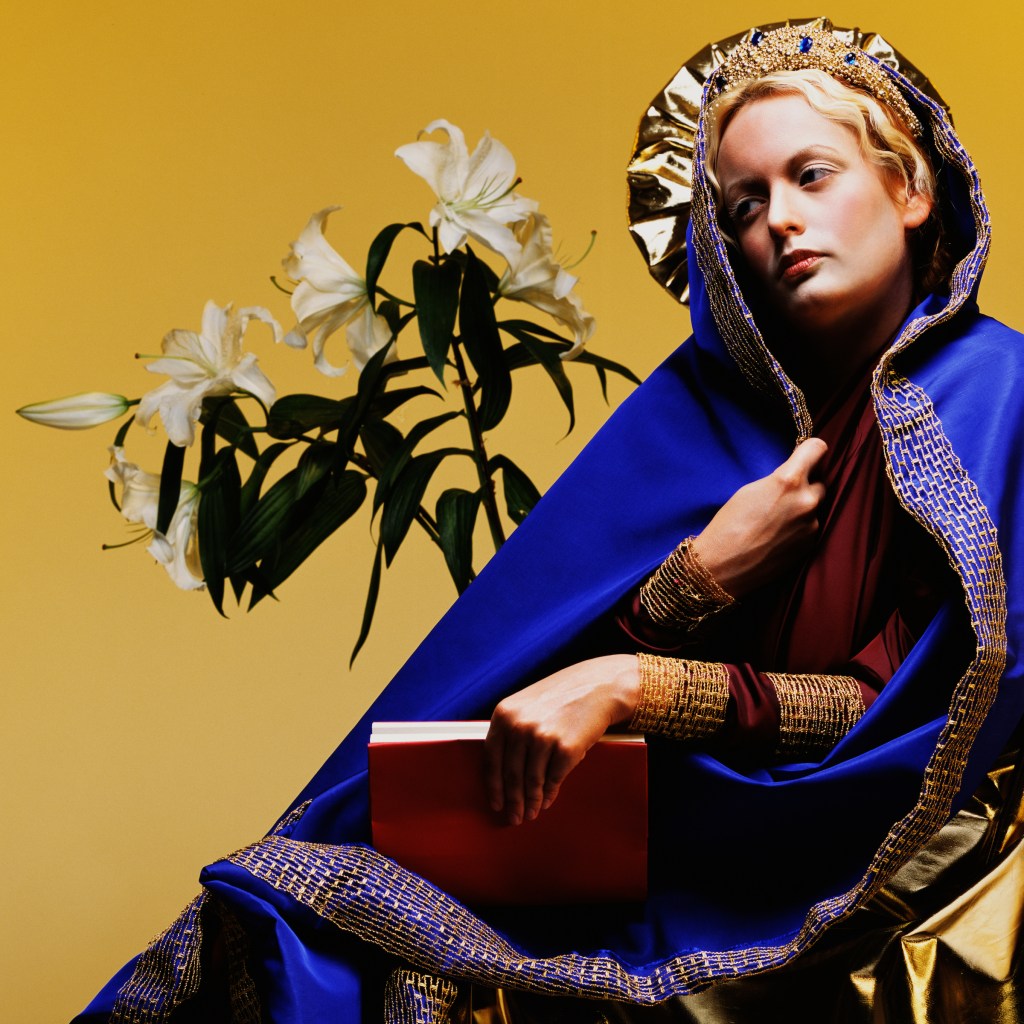This article contains adult content.
Uncannily familiar yet profoundly otherworldly, the tableaus of photographer Ventiko feel like works straight out of an art history book—if said book was less Eurocentric and heteronormative, and a lot more socially-conscious. The artist’s images are effectively remixes and reinterpretations of classic Renaissance paintings captured through the lens of her camera and filtered through the mind of a socially engaged artist who both appreciates the canon of art history but realizes certain inadequacies it possesses in 2016.
Videos by VICE

“Someone’s Saint,” 2012.
The photographer fuses iconic artworks like Giorgione’s Sleeping Venus and Titian’s Venus of Urbino, to create her own image “Reclining Venus,” replacing the milky white reclining women in the classic paintings with a voluptuous woman of color lying upon a wedding dress, rather than the silk bedding of the original paintings, as if emphatically pronouncing her resignation from the gendered roles inherent to marriage. In “Transformation of Venus,” Ventiko combines Velásquez’s Rokeby Venus with Ana Mendieta’s much more contemporary Facial Hair Transplant, challenging gender conformity through the portrayal of a nude woman sporting full-figured facial hair.

“Reclining Venus,” 2013
The works originated from a sort of push-and-pull Ventiko felt with Renaissance artworks, profoundly inspired by them but feeling an uncomfortable disconnect from them as well, as if something was lost in translation. “One of the primary characteristics of the Renaissance was the incorporation of Humanism into all disciplines… yet I have always felt that there was an element missing that doesn’t translate to contemporary social issues,” Ventiko explains to The Creators Project. “In my critique of contemporary culture, I draw from the Renaissance aesthetic and concept and add the elements I feel are missing.”

“Transformation of Venus,” 2015
“Regardless of race, gender, or socioeconomic status, the human form in all of its variety is to be celebrated and exalted. Renaissance works were created almost exclusively by the European Patriarchy for the elite and devout with the intention of communicating power and acceptable moralistic behavior through religious and allegorical insight,” Ventiko adds. “In the same fashion, I incorporate and recontextualize symbolism, gesture, expression, and formal compositional elements to disrupt the tradition of injustice and inequality present both then and now in our society.”

“Justice,” 2016
Not every work in Ventiko’s repertoire directly remixes specific Renaissance paintings. Other images that she composes appropriate general visual and stylistic elements of the era to create entirely original scenarios that fall somewhere between Caravaggio and David LaChapelle. In “Me and Dex,” a nude woman in seeming ecstasy sits next to a statuesque peacock on a modern workspace surrounded by floral drapes, a heady combination that traverses the line between contemporary and archaic and ends up in the purgatory of time.

“Me and Dex,” 2015
Yet all of these images represent only the static part of her practice: “In 2014 I began staging these tableaus as live photographic spectacles for both camera and audience. Shot live in an installation I created, the audience became participants and performers facilitating in my documentation of time and space,” tells Ventiko. “Each photographic performance embraces voyeurism, the human form, perversion of art history symbolism and iconography inspired by the location the experience occurs in.”

“Gypsy, My Muse,” 2015

“Director’s Den,” 2014
A more extensive archive of Ventiko’s photographic and performative artworks is available for your viewing pleasure here.
Related:
What Do Painters’ Personal Art Collections Say About Their Owners?



